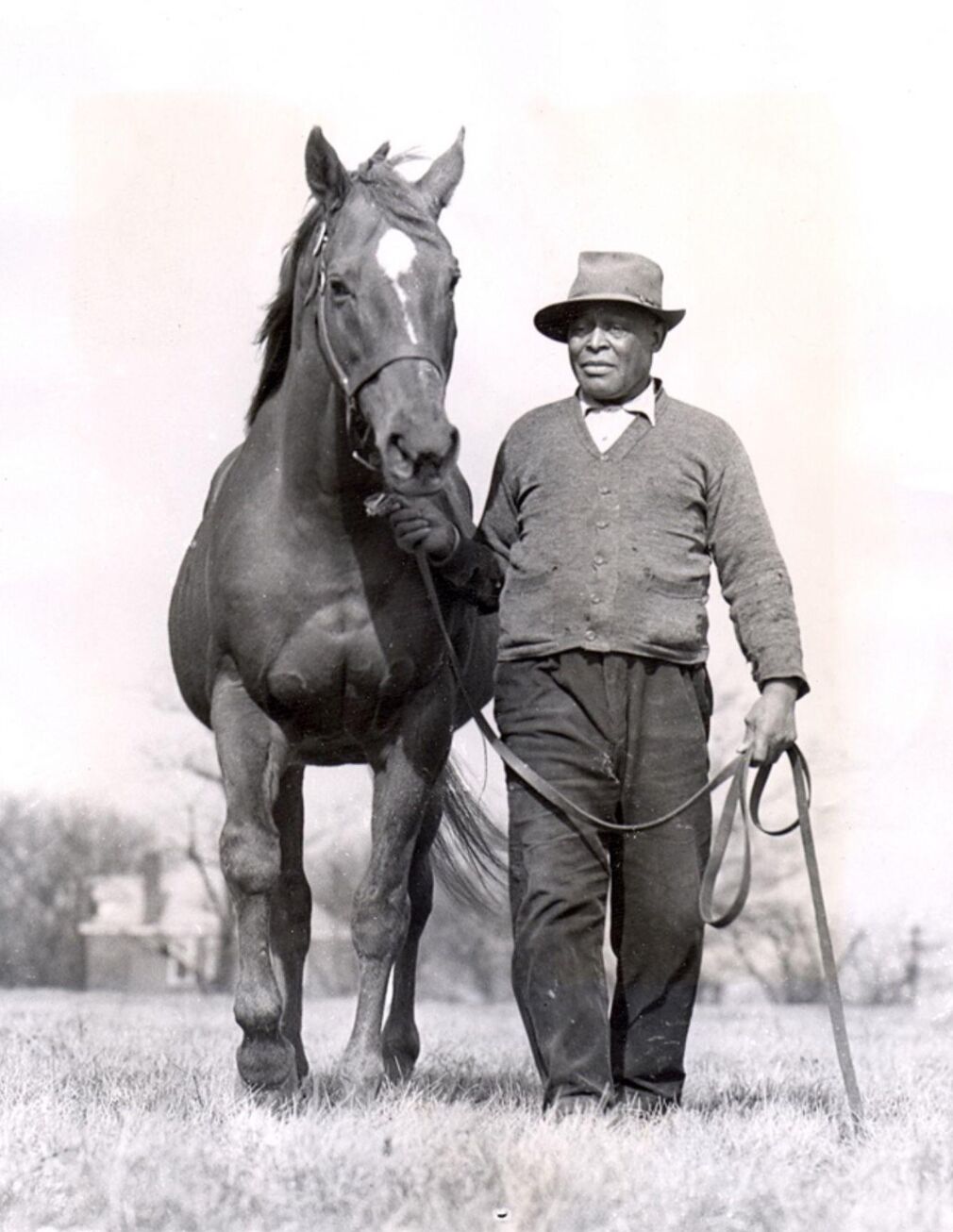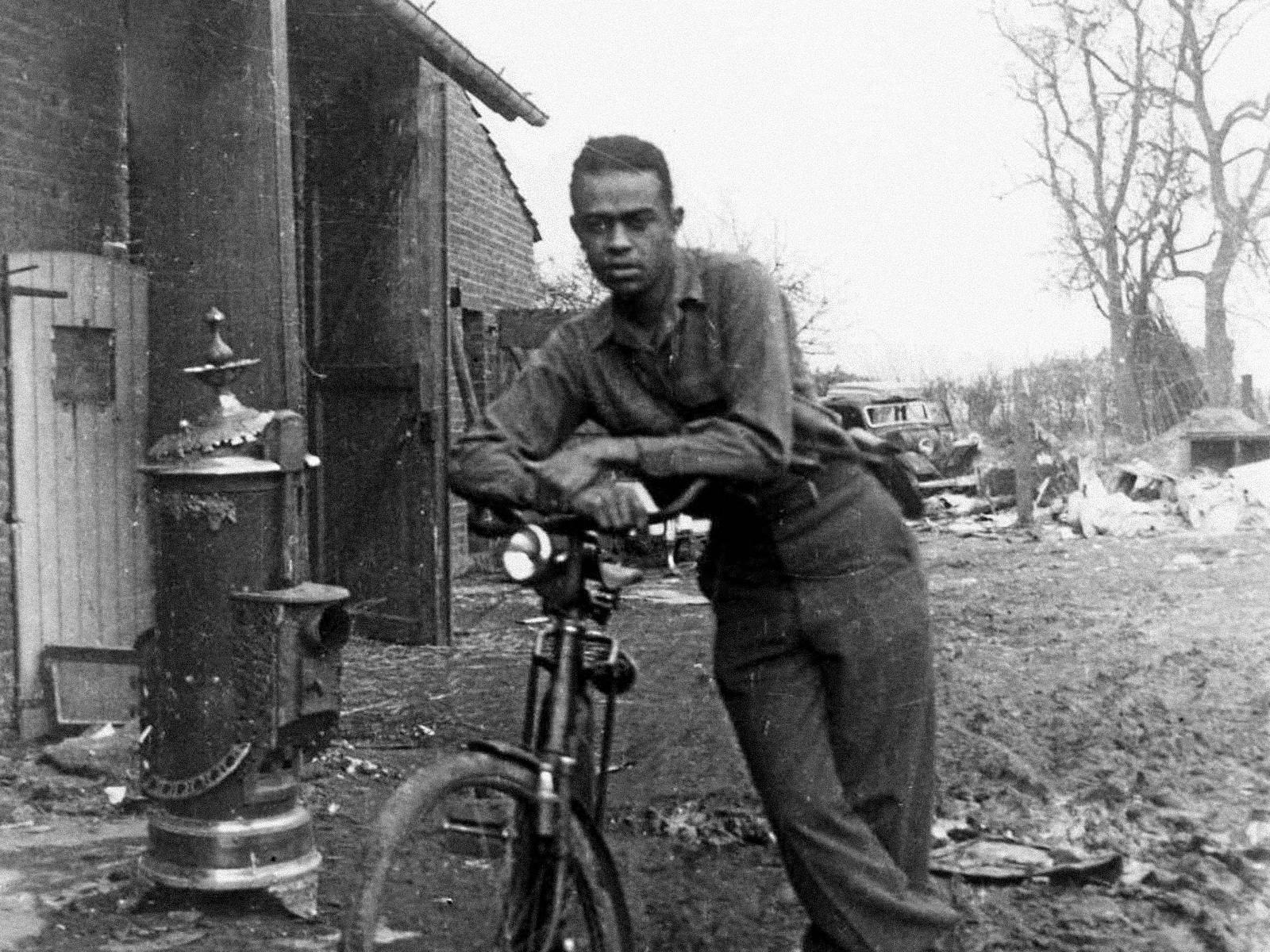James Harbut
James was born October 12, 1922 in Lexington Kentucky. As an eighteen-year-old student, he heard that his girlfriend NellieMcDowell was pregnant. He got married quickly, but even before his daughter Priscilla was born, he was already on a troop ship to Europe. That was in 1942. The 21-year-old young American father left for Europe as a conscript. A year later Nellie divorced him.
In Europe, James initially worked as a cook in various operations in Northern France, in the Ardennes, in the Rhineland and in Central Europe. At the end of 1944 he was stationed in the Netherlands for a few months in the village of Nieuwenhagen, near the German border.
James Quartermaster Service Unit was in charge of the storage of parts and the supply of the American army, needed for the moment it would push through to Germany. He worked as a nurse at the Red Cross post in the village. He cared for soldiers with minor injuries, but also for civilians. That must have been the reason that eyewitnesses from that time remembered "Jimmy" well. March '45 his unit left for Germany. James returned home in November '45. He died on December 23, 2015. He knew he had a daughter in the Netherlands.
Like so many American liberators, James became friends with a girl from the village
Like so many American liberators, James became friends with Toos (pseudonym), a girl from the village. As a seamstress, she repaired many clothes for the American soldiers who had been welcomed as liberators in their village.
James and Toos enjoyed the exuberant liberation parties that took place throughout the region.
It is not clear why and when James was transferred from one day to the next. In any case, he left for Germany in March 1945. He must have known while in Europe that Toos was pregnant. He also knew that their daughter Petra (pseudonym) was born on November 17, 1945. There was no question that he could return from Germany to Nieuwenhagen. One day a friend of James brought Toos a package of baby clothes that James had sent him through the Red Cross.
In november 1945 James returned home after two years and 10 months in Europe. For his merits during WWII, he was awarded the European-African-Middle Eastern Campaign Ribbon with 4 bronze stars, the Good Conduct Medal and the WWII Victory Medal.
Back home James was living with his (second) wife Margie and her son in Chicago, Illinois. They lived there in the large family house 'Faraway Farm' where his father had also lived. His father was the well-known groom (caretaker) Will Harbut of a then famous racehorse ‘Man O’War’.


A few of James's brothers lived with them. Over the years, the house offered shelter to all kinds of family members, for a shorter or longer period of time. Every year the family gathered to celebrate Thanksgiving Day. At the end of his life, James and Margie lived in a three-room home in Chatham, one of the nicest and safest neighborhoods of Chicago where many African-American families were back then lived. He was a patient man who brought his wife, who did not drive herself, wherever she wanted. Shopping was done on Saturday. He was the one who usually cooked, but in his old age he did the household with Margie. He always kept the garden perfectly. On Sundays they usually went to the Baptist church where he worked as a volunteer. After the service, he and his wife often visited a shelter in the area where two of his cousins lived. They then brought food for them. The cousins were lowered after the family of six children in which they grew up lost their mother at a young age.
For a long time James worked as a foreman at the Monarch Plastics factory. The last job he had before retirement was at the facilities department of the Chicago Board of Education.
James had two grandchildren of daughter Priscilla from his first short marriage, James and Beverly. From his mariage with Marjorie Mae Hunt in 1956 he had a stepson, Alvin. He was not aware that he had grandchildren by his daughter in Europe.
After years of silence, Toos, from her deathbed, finally told Petra her father's name and gave her a few pictures of James.
Mail from the Netherlands
End of 2015, James received a postcard from the Netherlands at his address in Chatham, Chicago. A woman, Petra, announced him that she intended to call him about his time in Nieuwenhagen. A phone call followed not long afterwards. In retrospect, as it turned out, it was just before James' death. Petra spoke to him briefly. She asked him about his memories of the time in Limburg. However, he could not remember much of it and did not recognize any of the names that Petra mentioned, including her mother's, Toos.
He did not know that it was his biological daughter with whom he spoke because she did not identify herself as such. Petra asked if she could call him again another day and he told her that was fine. The second conversation, however, was short and distant, at least that's how Petra remembers it.
Not much later, googling his address, oral historian Mieke Kirkels found a picture of James house with a "For Sale" sign. An obituary found in a Chicago newspaper showed that Petra's biological father had died shortly after their second, short telephone conversation.
James A. Harbut died on December 23, 2015 in Bowie, Maryland. His wife Marjorie, with whom he was married for 59 years, was with him. He turned 93 and survived all his brothers and sisters.
Petra now is in contact with the children of her American half-sister Beverly.
* Petra and Toos are pseudonyms. Petra has expressly requested not to mention her name or that of her mother.
Thanks to Cynthia Shambly - Marjorie's cousin.
